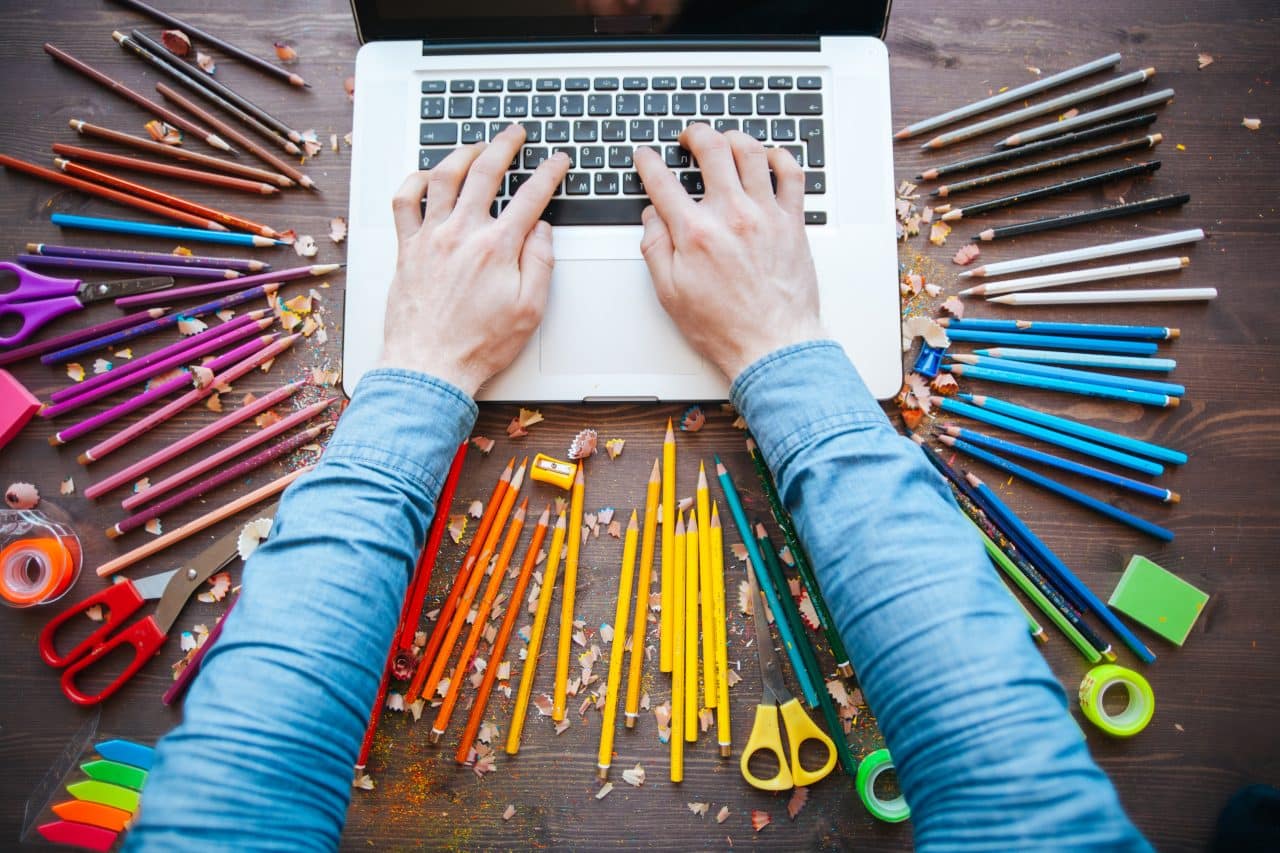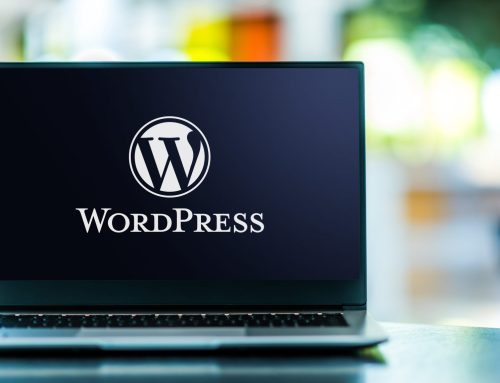A well-defined graphic design process is a proven way to consistently deliver impactful designs and creativity. The graphic design process has six steps that range from developing your design brief to gathering feedback and delivering your final product.

It’s no secret that we live in a visual world. From book covers, newspapers, and magazines to the plethora of digital graphics online and on TV, there are a number of ads we consume daily — sometimes without even realizing it.
No matter what company it is, graphic design has the potential to be a crucial part of any marketing strategy. Whether your client wants to showcase their fun and joyful brand, or they’re looking for a sleek and modern ad to highlight their newest product, graphic design is there to bring these ideas to life.
But how do you achieve powerful and impressionable ads for your clients? How do you produce positive and consistent results?
Well, developing and refining your graphic design process is a good place to start. As a process-driven agency, we have some insights into our graphic design process we’re happy to share.
What is the Graphic Design Process?

In a nutshell, the graphic design process is the steps a designer goes through to bring their clients’ design ideas to life. It helps both the designer and the client stay on track with milestones, expectations, and deliverables.
The graphic design process is there to help the designer create their artwork more effectively and efficiently, leading to higher client satisfaction — and fewer headaches for all parties involved.
The Graphic Design Process Steps
This process has six major steps: creating the design brief, researching the client’s competitors, drafting your design concepts, refining the chosen design, gathering feedback, and delivering the final product. When used together, these six steps can drastically increase the effectiveness and efficiency of your design work.
1. Develop your design brief
The design brief, also sometimes referred to as the creative brief, is used to help the designer learn more about the client’s needs with the project. This leads directly into the ideation phase, so it’s one of the most important steps in the graphic design process to nail down correctly.
A good graphic design brief should include project expectations and budget, design inspiration (and designs your client doesn’t like), information about the company, delivery format (eBook, brochure, etc.), file type, timeline expectations and important project milestones.
Be sure to ask if there are specific brand guidelines you should adhere to. A number of companies today have documents that are full of their recommended brand colors, fonts, and dos and don’ts.
It’s important to have your design brief finalized before moving to the next step. You don’t want to spend time working on an ad just to have one of the key points change mid-design.
For more complex projects, we recommend reviewing the brief together virtually or in person. This can help clear up any remaining questions on either side of the table.
2. Research similar designs
A good creative brief will help this step move along quickly. Regardless of how developed your brief is, a graphic designer should research their client’s competitors to see what designs they’re using and how they resonate with their target audience.
Analyze what makes your client different from their competitors and how you can highlight that in your own ad. Make note of what works, what doesn’t, and how you can make improvements upon their designs.
If what you’re designing will have a purpose on social media, you should do some research on each of their platforms to see what style of posts are getting the most engagement. Make note of what resonates with their target audience, even beyond your client’s niche, and see if you can incorporate that into your design.
As a graphic designer (or agency) your goal should be to create something that stands out and represents your client’s company, while staying closely aligned with what looks effective for other competitors in the space. This research will also help back up your decisions to move forward with specific design concepts and ideas.
3. Brainstorming and drafting your design
Now that you have a fully developed design brief and ample amounts of research to back up your ideas and decisions, it’s time to start designing. This part of the process is just building the framework and broad strokes of the design — think of mockups, sketches, and variations on what your client conveyed they would like/need.
Some designers like to create moodboards as well. A moodboard contains images, colors, and fonts that reference the style of design you are looking to create. Additionally, moodboards often contain other inspirational material to reference in the design process. Moodboards can help keep your main focus front of mind while looking into other ideas to see if they’ll mesh well together.
Typically, a thorough mix of designs include options requested directly from your client, and variations showing more effective alternatives based on your previous market research.
A good goal is to have 3-5 initial design drafts to present to your client. Have the client pick one of the options and move it into the next stage.
It’s important in this phase to have the client focus on picking the option based on the strongest idea instead of just the most aesthetically pleasing design. Most designs in this step are often without color in a non-final draft, and will be improved once chosen.
4. Create your graphic design
In this step, it’s finally time to start developing your graphic design in earnest. This is probably pretty self-explanatory, but you’ll want to take into consideration:
- Your client’s original idea
- What they liked about the design they picked in step 3
- What direction you and the client have decided to move to create the final deliverable
Before moving your design into step 5, be sure to analyze your product critically. If anything seems out of place, this is the time to make your own edits before opening it up to a broad audience for feedback.
5. Gather feedback and make revisions
Once you have a draft of your design you’re comfortable with receiving feedback on, it’s time to submit it for review. Feedback is one of the most important aspects of the graphic design process because you won’t know how to move forward without it.
A common methodology for feedback is to implement the 10/50/99 review structure.
- 10% progress – the design is a mockup or draft of the final result. You should review the vision and direction you’re going in to ensure it aligns with your client’s vision.
- 50% progress – The main design elements are coming together.
- 99% progress – these are the miniscule edits, like changing the spacing in between letters and fine tuning the colors.
While these stages might not work for all designers and clients, it can be a good starting point on creating milestones. You might go through multiple rounds of revision, and that’s okay. Just keep the project’s original milestones and timeline in mind.
If the revision stage of the graphic design process is getting bogged down with unhelpful comments, you can try asking for feedback on specific elements of the design or having a singular point of contact that provides the feedback versus a whole team.
6. Deliver your final design assets
After you’ve received final approval on your design, it’s time to deliver the final asset.
Check your design brief to see what format you should deliver the project in. This will help your client (and you!) not deal with the hassle of having to recreate different versions or file types down the line.
We have found the most successful receptions occur when you show the client the final assets live on a call or during an in-person meeting. This allows you to control the presentation and reception, guiding the client’s thoughts. Being able to immediately explain elements and decisions allows the first impression to be much more positive and accurately understood than if you just shipped assets in an email.
Why the Graphic Design Process is Important

Similar to outlining a blog first before jumping straight into writing, the graphic design process helps structure and guide the entire creative process. Developing a thorough design brief can serve as the backbone for your entire design to clarify and guide you.
The graphic design process also helps manage expectations of the client, which can make it a better and easier process for all parties involved. There (hopefully) won’t be any questions on deliverables or milestones with a fully developed design brief for clients to refer back to.
Beyond helping your client, the graphic design process can help you produce reliable and consistent results, regardless of what industry you’re currently working in. Think of it as a “rinse and repeat” type of approach to design, where you have a proven formula for creating impactful designs.
All in all, the graphic design process allows designers and their clients to create a more effective and powerful final deliverable. If you’re in need of graphic design services, contact Jack & Bean to see how we can help bring your vision to life.



